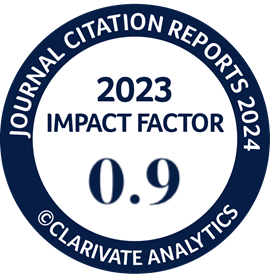Modeling of a Threshold-Based Scaling and Fractional Admission Controlling Problem for NSSI Blocks to Ensure QoS and Optimize Resource Utilization in 5G Network Slicing
DOI:
https://doi.org/10.4186/ej.2025.29.1.57Keywords:
5G network slicing, NSSI block, TS, FAC, Q-TSFAC-NBAbstract
In the 5G core network, network functions can be flexibly scaled out/in network slices proactively. The autoscaling process increases effectiveness by scaling out network function instances and minimizes expenses by scaling NSSI (Network Slice Subnet Instance) blocks. 5G network functions have to deploy or terminate multiple NFIs (Network Function Instances) simultaneously; it significantly affects the system’s cost efficiency and ensures QoS (Quality of Service). In the paper, we will propose a Markov chain-based analytical model for the Threshold-based Scaling and Fractional Admission Controlling problem of NSSI blocks (called TSFAC-NB) within a 5G network slice. The model will incorporate two thresholds related to the scaling-out/scaling-in of NSSI blocks. We will also propose a FAC (Fractional Admission Controlling) mechanism in the model with two thresholds added to control NSSI blocks by the probability to optimize resource utilization. A threshold-based scaling and fractional admission controlling (TSFAC) algorithm is developed and implemented in Kubernetes-based Open5GS to evaluate the performance of TSFAC-NB experimentally. The simulation results show a similarity between the analytical and experimental results, in which the analytical model helps to determine the admission thresholds for the best performance of TSFAC-NB.
Downloads
Downloads

Authors who publish with Engineering Journal agree to transfer all copyright rights in and to the above work to the Engineering Journal (EJ)'s Editorial Board so that EJ's Editorial Board shall have the right to publish the work for nonprofit use in any media or form. In return, authors retain: (1) all proprietary rights other than copyright; (2) re-use of all or part of the above paper in their other work; (3) right to reproduce or authorize others to reproduce the above paper for authors' personal use or for company use if the source and EJ's copyright notice is indicated, and if the reproduction is not made for the purpose of sale.








